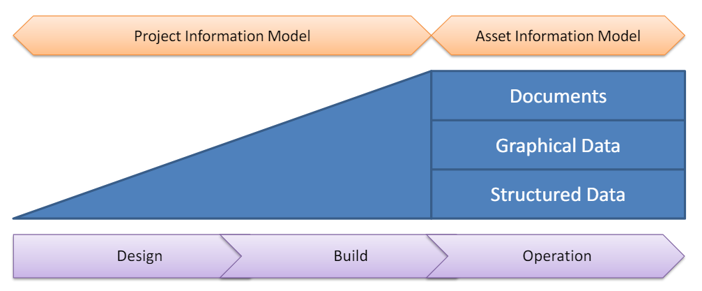One of the advantages of BIM is the ability to provide current, accurate, and actionable information about a resource.
As in the case of the PIM (Project Information Model) – BIM model designed to manage the design and construction phases – it is of vital importance that the AIM (Asset Information Model) – BIM model prepared for asset management during the operational phase – contains up-to-date, good quality data useful for asset management.
It is necessary to accurately define the processes and contractual forms capable of governing all the phases of managing an asset, taking into account the wide availability and usability of information contained in the AIM.
The documents that govern the processes of facilities are the AIR (Asset Information Requirement) l’OIR (Organizational Information Requirement) which are respectively the equivalent of the PLQ (Plain Language Question) and the EIR (Employer Information Requirement) in use during the production phase.
All participants in the facilities life-cycle process, from concept through disposal, must share and comply with the provisions of the contractual documents.
Asset Information Model
The AIM is the unitary source of the approved and validated information relating to the Assets to be managed.
The information contained in the AIM includes the data and the geometries that concern the works, the spaces and the elements associated with them, the data on the performances, the materials, the technical sheets, user and maintenance manuals, information relating to safety, etc.
When considering the use of BIM for the construction of a new work and therefore also for its subsequent management, the most efficient and economical approach is to use the data and information contained in the PIM model.
The PIM model defines information requirements from the outset.
The Facility Manager(s), who more than anyone else knows what services the Asset will provide during the operational phase, should be involved right from the design and construction phases of any project.
In short, start thinking about O&M from the beginning.
Life-cycle information and asset management involves a circle in which the AIR feeds the EIR to allow the development of the IMP in anticipation of its use also in the management phase.
The AIM supports a flexible sequence of activities during the operational phase of the Asset able to manage planned and unplanned events useful to further structure the information of the Asset in a consistent manner.
The structured information in the AIM is the compass with which the Facility Manager will be able to make decisions necessary to keep the Asset at predetermined performance levels and most effectively respond to users’ needs.
The real benefits of the “BIM method” will come when it will finally be used for real estate life-cycle management.
BiC-6D is part of the overall vision of Lemsys which aims to create a solution’s collection dedicated to the individual phases building integrated with the Building in the Cloud collaboration platform.
The additional modules are intended to cover, with the common denominator of the BIM Model, all the phases of the processes necessary for the correct building’s life-cycle.
